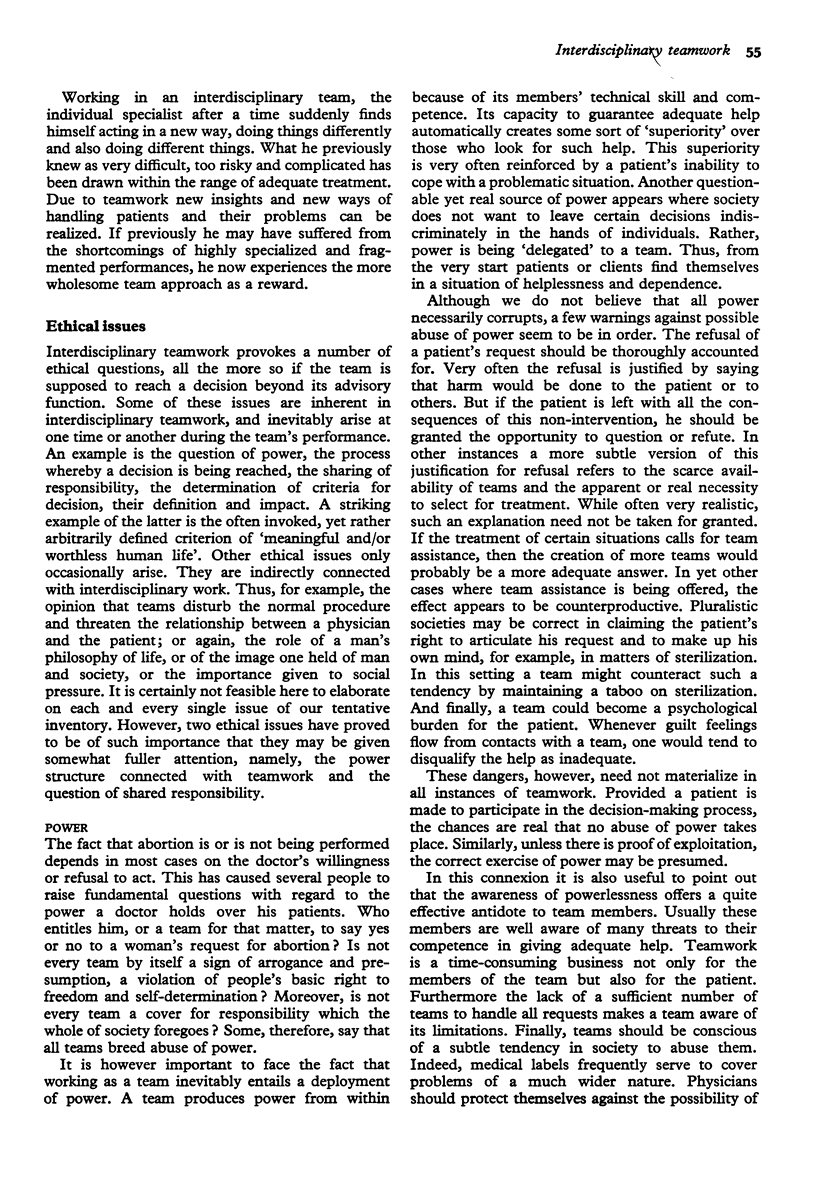Abstract
A group of consultants of different disciplines working as a close-knit team is not a new idea in Britain, but including the patient or client in that team is a new concept when constructing an interdisciplinary team. Some of the lessons learned in working in interdisciplinary teams may have been tacitly understood in the past but in this paper Dr De Wachter expands and illustrates the philosophy behind interdisciplinary teamwork. He explains how communication grows into "another language" and how those of disparate disciplines become one in their thinking when solving a problem together. There is an ethic of teamwork, too, which is elucidated in this paper, especially in relation to the pitfalls of power and shared responsibility. A number of case histories illustrate the argument.
Full text
PDF





Selected References
These references are in PubMed. This may not be the complete list of references from this article.
- Kaplan M. B. Lay participation in medical policy making. III. The case of the artificial heart panel. Hastings Cent Rep. 1975 Oct;5(5):41–48. [PubMed] [Google Scholar]


